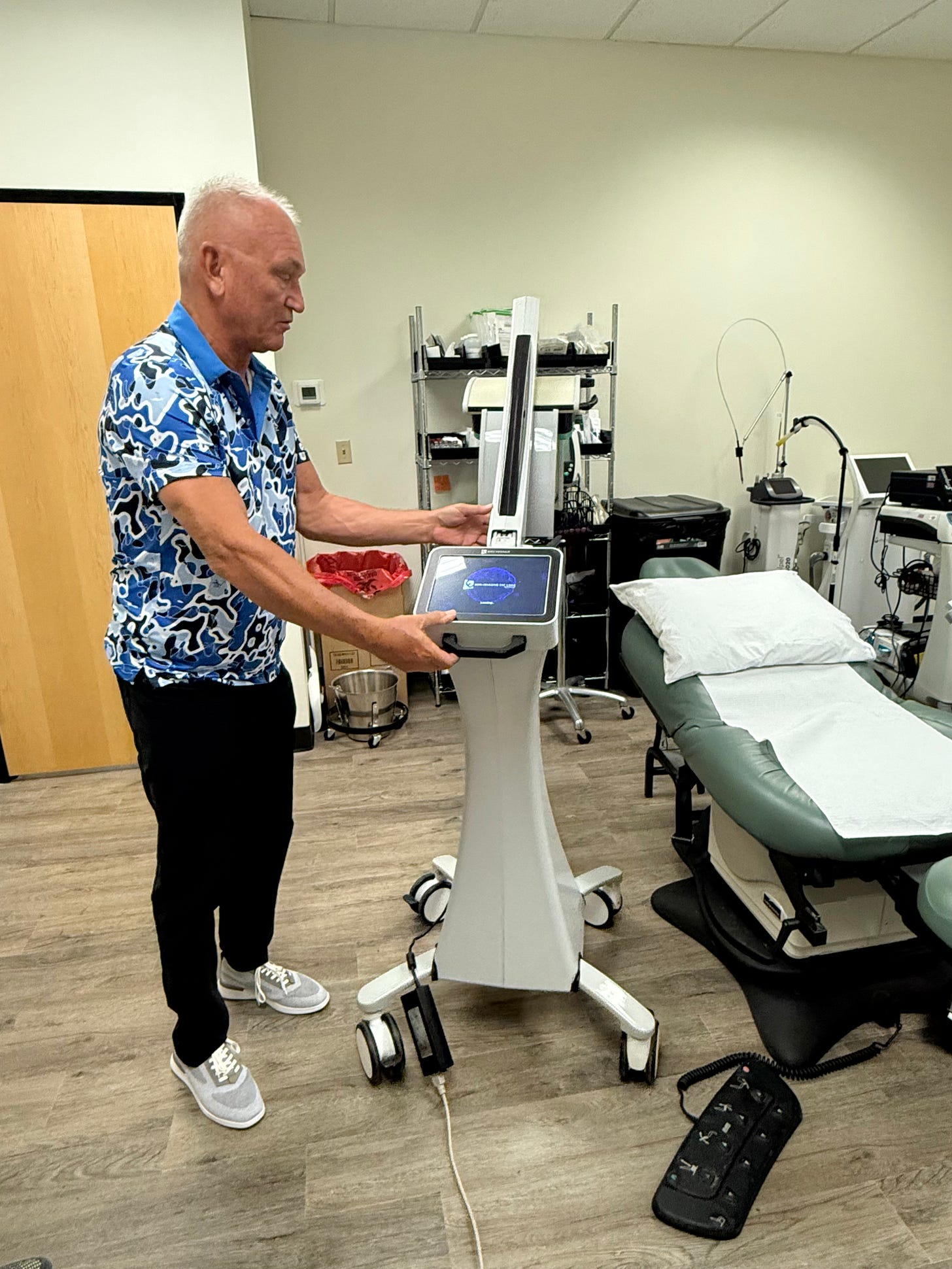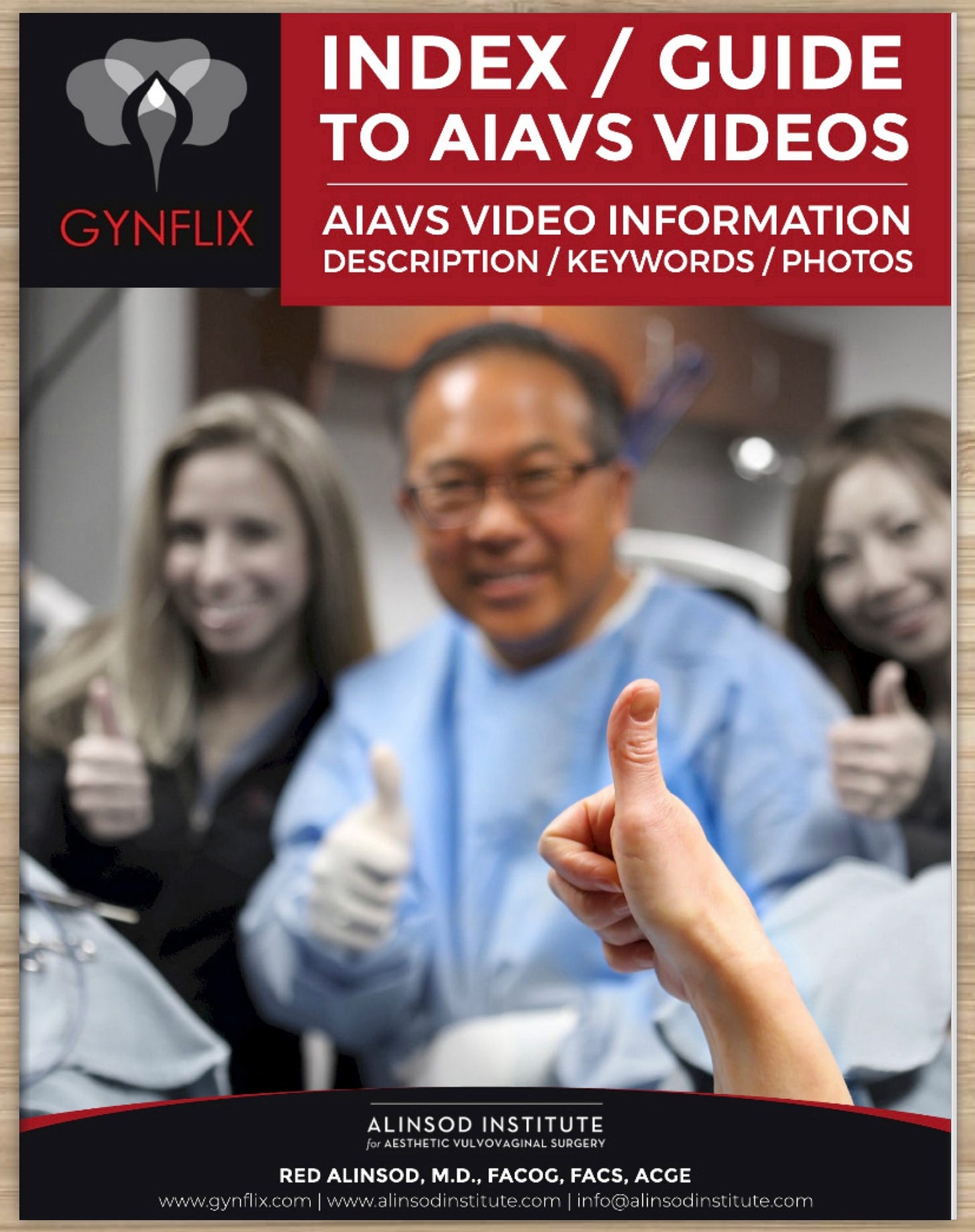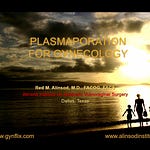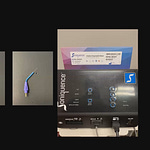It was a perfect week for me. Flew in from Peru (got to visit Machupichu), moved into my new office in Arlington, Texas, jumped into my first surgeries (No IV, awake, and under local anesthesia) in my new and just finished surgical suite, and spent precious time with Team Erchonia Laser from South Carolina! Erchonia Founder Steve Shanks and Erchonia Clinical Affairs Manager Travis Sammons both flew for my training in their newest device using Green and Purple/Blue laser for reducing skin laxity and fat melting. They also trained me on their newest “405” laser using Red and Purple/Blue light targeting pain and spasms and tissue regeneration. We also caught up on our FDA research application for the use of LLLL for a variety of gynecologic conditions Erchonia has agreed to pursue with my guidance. Alinsod Institute is a Clinical Research location. Dian (my Medical Assistant and Office Manager) and I are were honored by Steve and Travis’ visit. Thank you Team Erchonia.
I flew to Erchonia’s South Carolina headquarters in Greenville last year and met the finest team of scientists and LLLL experts. We discussed gynecologic applications and agreed to pursue several projects. I was given a tremendous crash course in laser physics pertaining to low level energy and got reacquainted with the Electron Transport Chain that I had last looked at in Medical School at Loma Linda over 40 years ago. This video shows my research into the topic geared for the newbie wanting to know more about low level light lasers. Also be sure to view my summary of main points below. By 2026 Erchonia LLLL tech will be brought into the market. Imagine getting RF (ThermiVa/Morpheus/EmFemme) and Laser (Mona Lisa/Diva/etc.) results without patient contact, without disposable, without discomfort. So here is your teaser presentation. Enjoy the video.
Join Gynflix.com for more Cosmetic Gynecology e-Learning. Spanish Edition Coming Soon.
Red Alinsod, MD (red@gynflix.com)


LLLL Colors and Benefits
Pathophysiology of Low-Level Light Laser (LLLT) Effects Using Red, Violet, and Green Light
General Mechanisms of LLLT
Low-Level Light Therapy (LLLT), also known as Photobiomodulation, involves the use of light at low power to induce biological effects at the cellular level. The primary mechanism involves:
• Cellular Energy Production: LLLT increases mitochondrial activity by enhancing ATP synthesis. This is achieved through the stimulation of cytochrome c oxidase within the mitochondrial respiratory chain, which leads to more efficient electron transport and higher ATP production.
• Reduction of Inflammation: By modulating cytokine levels, LLLT can reduce pro-inflammatory markers and promote anti-inflammatory responses. This is crucial for conditions where inflammation plays a significant role.
• Cell Proliferation and Tissue Repair: Light energy stimulates fibroblast proliferation, enhancing collagen and elastin synthesis, which are vital for wound healing and skin rejuvenation.
Specific Effects by Wavelength
Red Light (635nm)
• Skin Conditions:
• Acne: Red light has antimicrobial properties and reduces sebaceous gland activity, which helps manage acne vulgaris.
• Wound Healing: Promotes faster healing by increasing cell proliferation, collagen deposition, and angiogenesis.
• Anti-Aging: Stimulates collagen and elastin production, reducing wrinkles and improving skin elasticity.
• Vaginal Atrophy and Dryness:
• Red light therapy aids in improving vaginal health by enhancing local blood circulation and promoting tissue repair, potentially reducing symptoms of atrophy.
• Pelvic Pain:
• By reducing inflammation and modulating nociceptive pathways, red light can alleviate chronic pelvic pain.
• Hair Growth:
• Enhances hair follicle proliferation and increases blood flow to the scalp, potentially aiding in hair regrowth in cases of androgenetic alopecia.
Violet Light (405nm)
• Antimicrobial Properties:
• Violet light is particularly effective against bacteria due to its ability to produce reactive oxygen species, which can kill pathogens. This is useful for treating skin infections, including acne.
• Skin Rejuvenation:
• Stimulates the production of collagen at a deeper level due to its shorter wavelength, which can penetrate less but still influence cellular processes effectively.
• Dermatological Conditions:
• Helps in treating conditions like psoriasis by reducing inflammation and promoting healing.
Green Light (520nm)
• Angiogenesis and Neoangiogenesis:
• Green light stimulates the formation of new blood vessels, which is beneficial for wound healing and improving circulation in ischemic tissues.
• Pain Management:
• Particularly effective for musculoskeletal pain due to its impact on muscle tissues, reducing pain and increasing range of motion.
• Neurological Recovery:
• Has shown potential in treating conditions involving neural damage or degeneration by promoting neurogenesis and reducing inflammation in neural tissues.
Clinical Applications
• Musculoskeletal Pain and Inflammation:
• All three wavelengths have applications, but green and red are prominent for their deep penetration and pain-relieving effects.
• Dermatological Uses:
• Combination therapy using red and violet lights can address a wide range of skin conditions from acne to aging signs.
• Gynecological Health:
• Red light, in particular, has been explored for its benefits in managing vaginal health issues like atrophy and dryness.
• Hair Restoration:
• Red light therapy is increasingly used for hair loss treatments due to its capacity to stimulate hair follicles.
Bibliography and References
1. Erchonia Corporation. (n.d.). EVRL Laser - Red and Violet Therapy Laser. www.erchonia.com
2. Erchonia Corporation. (n.d.). Harnessing the Power of Violet Lasers: A Comprehensive Guide. erchonia-emea.com
3. Erchonia Corporation. (n.d.). GVL Laser: Unlocking the Power of Green & Violet Wavelengths. erchonia-emea.com
4. Erchonia Corporation. (n.d.). Is Red Light Therapy Safe for Your Patients?. www.erchonia.com
5. Erchonia Corporation. (n.d.). The Future of Healing: Exploring the Power of Light Therapy. erchonia-emea.com
6. Erchonia Corporation. (n.d.). Green Laser Therapy: The Power of Light in Modern Treatment. erchonia-emea.com
7. Erchonia Corporation. (n.d.). Unlocking the Power of GVL: Revolutionary Green & Violet Laser. erchonia-emea.com
8. Erchonia Corporation. (n.d.). Leading Low-Level Laser Therapy (LLLT) Devices. erchonia-emea.com
9. Erchonia Corporation. (n.d.). Educational Resources. www.erchonia.com
Use of Low-Level Light Therapy (LLLT) for Gynecology
Conditions Addressed by LLLT in Gynecology:
1. GSM and Vulvovaginal Atrophy
Wavelength: Primarily Red Light (630-670nm) due to its penetration depth and stimulation of tissue repair.
Beneficial Effects:
▪ Angiogenesis, collagenesis, elastogenesis
▪ Improves vaginal lubrication and reduces dryness
▪ Restores and enhances tissue elasticity and vascularization
▪ Reduces symptoms like dyspareunia and urinary symptoms.
Protocol:
▪ Device: Red and Violet, Red and Violet and Green Lights
▪ Application: 10-20 minute sessions, Typically, 1-2x/week for 6-8 weeks
Mechanism:
▪ Increased Mitochondrial activity
▪ Increases blood flow
▪ Stimulates collagen and elastin production
▪ Increases cellular metabolism and tissue repair
▪ Promotes regeneration and healing of vulvovaginal tissues.
2. Pelvic Pain
Wavelength: Red and Violet, Red and Violet and Green Lights
Beneficial Effects:
▪ Reduces inflammation, thus alleviating pain.
▪ Modulates pain signals by affecting nerve function and reducing muscle tension.
Protocol:
▪ Device: 10-20 minute sessions, Typically, 1-2x/week for 6-8 weeks
▪ Application: 10-20 minute sessions, Typically, 1-2x/week for 6-8 weeks
▪ Maintenance as needed for pain relief
Mechanism:
▪ Pain reduction through anti-inflammatory effects and improved circulation through Violet and Green lights
▪ Reduction in Tumor Necrosis Factor Alpha (TNF Alpha) with Red light
3. Lichen Sclerosus
Wavelength: Red light improves the skin thickness, elasticity, tone and moisture and reduces TNF Alpha. Violet and Green lights reduce inflammatory cytokines
Beneficial Effects:
▪ May help in reducing skin lesions, itchiness, and pain by promoting healing and reducing inflammation.
▪ Could assist in preventing the progression to more severe conditions like squamous cell carcinoma.
Protocol:
▪ Device: 10-20 minute sessions, Typically, 1-2x/week for 6-8 weeks
▪ Application: Typically involves 2-3 sessions per week for several weeks, then maintenance.
Mechanism: Stimulates tissue repair, reduces inflammation, and might help in normalizing skin architecture
General Considerations for LLLT in Gynecology:
• Safety: LLLT is generally non-invasive with minimal side effects, mainly warmth or mild discomfort during application.
• Individualization: Protocols can vary based on individual response and severity of symptoms.
• Combination Therapy: Often used alongside other treatments like lubricants, moisturizers, or hormone therapy for synergistic effects.
Bibliography and References:
1. Gambacciani, M., Levancini, M., Russo, E., et al. (2018). Long-term effects of vaginal erbium laser in the treatment of genitourinary syndrome of menopause. Climacteric, 21(2), 142-146.
2. Elia, D., Gambacciani, M., Berreni, N., et al. (2019). Genitourinary syndrome of menopause (GSM) and laser VEL: a review. Horm Mol Biol Clin Investig, 41(1).
3. Joylux. (n.d.). LED Light Therapy Works for Your Vagina, Too. www.harpersbazaar.com
4. Joylux. (n.d.). Does LED Red Light Therapy Live Up To The Hype?. joylux.com
5. Deeply Vital Medical. (2024). Red Light Therapy: Science for Vulvar and Vaginal Health. deeplyvitalmedical.com
6. Tadir, Y., Gaspar, A., Lev-Sagie, A., et al. (2017). Light and Energy Based Therapeutics for Genitourinary Syndrome of Menopause: Consensus and Controversies. Lasers in Surgery and Medicine, 49(2), 137-159.
Please note, the exact protocols can vary due to ongoing research and individual patient responses. Always consult with healthcare providers for tailored treatments. We are currently in the middle of clinical studies at the Alinsod Institute for various gynecologic and cosmetic indications.
THEORY OF MECHANISM OF OPERATION OF APPLICATION OF LOW-LEVEL LASER THERAPY (LLLT) USING THE ERCHONIA® VAL TO REDUCE MODERATE TO SEVERE VULVOVAGINAL ATROPHY (VVA) SYMPTOMS.
VVA is a condition associated with decreased estrogenization of the vaginal tissue, which can decline naturally during menopause. Estrogen stimulates collagen production, providing structural support and elasticity to the tissues. Additionally, estrogen promotes lubrication and fosters a slightly acidic vaginal environment that hinders the growth of pathogens. With declining estrogen levels, a cascade of events ensues. In the vulva, collagen loss leads to a thinning and flattening of the labia majora and minora. The skin loses elasticity, becoming more susceptible to tears and exhibiting changes in color and texture, often appearing paler and feeling drier or rougher. This dryness and thinning can manifest as significant itching and discomfort, particularly with friction. Within the vagina the lining thins and loses moisture, leading to dryness and a lack of natural lubrication. The vaginal walls lose elasticity, potentially impacting sexual function and comfort. Furthermore, the decline in estrogen disrupts the vaginal pH balance, making it less acidic and more susceptible to infections. The lack of moisture and altered pH can irritate the vaginal lining, leading to inflammation and discomfort.
Low-level laser therapy (LLLT) application initiates a photochemical reaction in cells that alters their biological activity. The primary target of this light therapy is the mitochondria, the cell's energy-producing organelles. Specific wavelengths of light are absorbed by protein complexes within the mitochondrial electron transport chain. This translates to enhanced oxidative phosphorylation, the main cellular process for generating adenosine triphosphate (ATP), the fundamental energy molecule powering cellular functions. LLLT influences a broad spectrum of biological activity, with research suggesting a regulation of over 100 genes, impacting various cellular processes like growth, collagen synthesis, microcirculation, apoptosis (programmed cell death), DNA repair, and antioxidant activity [1]. (shown below)
Studies investigating red LLLT applied directly to ovarian granulosa cells (responsible for estrogen synthesis) have shown that LLLT appears to stimulate the enzyme 3-β-hydroxysteroid dehydrogenase [2,], a key player in estrogen biosynthesis, and may further influence granulosa cells by increasing their number and improving vascular stability within the ovaries [3,4].
In VVA, a decline in estrogen levels often leads to a decrease in collagen production, contributing to vaginal thinning, dryness, and loss of elasticity. Green and red LLLT irradiance, like that applied by the Erchonia VAL have shown to promote collagen synthesis and deposition [5,6,7]. Seo et al (2014), examined the effects of multiple wavelengths and found red and green light were the only wavelengths that increased the expression of collagen type I and TGF-β1 compared to the control [8]. The binding of TGF-β1 to specific receptors on the surface of fibroblasts ultimately leads to the activation of SMAD proteins, the active gene responsible for collagen synthesis (COL1A1 and COL3A1). Investigations with the Erchonia red laser have also demonstrated the ability to modulate TGF-β1, as well as insulin growth factor (IFG-1) which helps maintain the thickness and elasticity of the vaginal lining [9]. Likewise, a study published in the Journal of Cosmetic Dermatology showed low-level green laser enhanced the secretion of Collagen I and III. [10] Additionally, green light can significantly induce leptin [11], which exerts a specific mitogenic response on keratinocyte and fibroblast proliferation, on collagen synthesis, and also acts as a potent angiogenic factor for endothelial cells.
The angiogenic factor of LLLT has also been widely reported with red light and especially the effect on vascular endothelial growth factor (VEGF) [12]. VEGF stimulates multiple components of the angiogenic cascade, but also promotes collagen deposition and epithelialization. Exposure to low-level laser radiation with a wavelength of 630nm (red) has been shown to result in a 30% rise in VEGF gene expression within vascular endothelial cells, alongside an elevation in the count of M2 macrophages. [13]
The biological effect was also confirmed in an assessment of the impact of laser radiation within the visible and infrared light spectrum on the growth of vascular endothelial cells by Szymanska et al, which determined that low-level laser therapy at a wavelength of red 635 nm resulted in the most significant increase in endothelial cell proliferation. [14]
Dr. Kerry Zang, DPM conducted an evaluation of the application of the Erchonia 635nm laser to individuals presenting with chronic lower extremity pain. Blood Doppler assessed baseline microcirculation and microcirculation following each of four laser treatments. The blood doppler results demonstrated a 75% improvement in circulation across all patients (n=20) after 1.5 weeks of treatment, with a cumulative improvement in circulation occurring across successive treatments.
References
1. Zhang Y, Song S, Fong CC, Tsang CH, Yang Z, Yang M. cDNA microarray analysis of gene expression profiles in human fibroblast cells irradiated with red light. J Invest Dermatol. 2003 May;120(5):849-57. doi: 10.1046/j.1523-1747.2003.12133.x. PMID: 12713592.
2. Oubiña G, Pascuali N, Scotti L, Di Pietro M, La Spina FA, Buffone MG, Higuera J, Abramovich D, Parborell F. Low level laser therapy (LLLT) modulates ovarian function in mature female mice. Prog Biophys Mol Biol. 2019 Aug;145:10-18. doi: 10.1016/j.pbiomolbio.2018.11.010. Epub 2018 Nov 27. PMID: 30500339.
3. Gregoraszczuk E, Dobrowolski JW, Galas J. Effect of low intensity laser beam on steroid dehydrogenase activity and steroid hormone production in cultured porcine granulosa cells. Folia Histochem Cytochem (Krakow). 1983;21(2):87-92. PMID: 6576968.
4. Al-Watban FA, Andres BL. Effect of He-Ne laser (632.8 nm) and Polygen on CHO cells. J Clin Laser Med Surg. 2000 Jun;18(3):145-50. doi: 10.1089/clm.2000.18.145. PMID: 11799979.
5. Vinck EM, Cagnie BJ, Cornelissen MJ, Declercq HA, Cambier DC. Increased fibroblast proliferation induced by light emitting diode and low power laser irradiation. Lasers Med Sci. 2003;18(2):95-9. doi: 10.1007/s10103-003-0262-x. PMID: 12928819.
6. Vinck EM, Cagnie BJ, Cornelissen MJ, Declercq HA, Cambier DC. Green light emitting diode irradiation enhances fibroblast growth impaired by high glucose level. Photomed Laser Surg. 2005 Apr;23(2):167-71. doi: 10.1089/pho.2005.23.167. PMID: 15910180.
7. Poon VK, Huang L, Burd A. Biostimulation of dermal fibroblast by sublethal Q-switched Nd:YAG 532 nm laser: collagen remodeling and pigmentation. J Photochem Photobiol B. 2005 Oct 3;81(1):1-8. doi: 10.1016/j.jphotobiol.2005.05.006. PMID: 16019220.
8. Seo YK, Park JK, Song C, Kwon SY. Comparison of light-emitting diode wavelength on activity and migration of rabbit ACL cells. Lasers Med Sci. 2014;29:245–255
9. Luo L, Sun Z, Zhang L, Li X, Dong Y, Liu TC. Effects of low-level laser therapy on ROS homeostasis and expression of IGF-1 and TGF-β1 in skeletal muscle during the repair process. Lasers Med Sci. 2013 May;28(3):725-34. doi: 10.1007/s10103-012-1133-0. Epub 2012 Jun 20. PMID: 22714676.
10. Gong C, Lu Y, Jia C, Xu N. Low-level green laser promotes wound healing after carbon dioxide fractional laser therapy. J Cosmet Dermatol. 2022 Nov;21(11):5696-5703. doi: 10.1111/jocd.15298. Epub 2022 Sep 19. PMID: 35947511.
11. Fushimi T, Inui S, Nakajima T, Ogasawara M, Hosokawa K, Itami S. Green light emitting diodes accelerate wound healing: characterization of the effect and its molecular basis in vitro and in vivo. Wound Repair Regen. 2012 Mar-Apr;20(2):226-35. doi: 10.1111/j.1524-475X.2012.00771.x. PMID: 22380691.
12. Rohringer S, Holnthoner W, Chaudary S, Slezak P, Priglinger E, Strassl M, Pill K, Mühleder S, Redl H, Dungel P. The impact of wavelengths of LED light-therapy on endothelial cells. Sci Rep. 2017 Sep 6;7(1):10700. doi: 10.1038/s41598-017-11061-y. PMID: 28878330; PMCID: PMC5587748.
13. Stepanov YV, Golovynska I, Golovynskyi S, Garmanchuk LV, Gorbach O, Stepanova LI, Khranovska N, Ostapchenko LI, Ohulchanskyy TY, Qu J. Red and near infrared light-stimulated angiogenesis mediated via Ca2+ influx, VEGF production and NO synthesis in endothelial cells in macrophage or malignant environments. J Photochem Photobiol B. 2022 Feb;227:112388. doi: 10.1016/j.jphotobiol.2022.112388. Epub 2022 Jan 12. PMID: 35074677.
14. Góralczyk K, Szymańska J, Linkowska K, et al. Effect of low level laser irradiation on VEGF gene expression in cultured endothelial cells. Medical Research Journal. 2014; 2: 61-65.
GYNFLIX COMMUNITY HAS LAUNCHED!
I built an online community of expert Cosmetic Gynecologists from around the world who you will be able to communicate with and pick their brains. Click on the logo picture for the link:
GYNFLIX Cosmetic Gynecology e-Learning
For Detailed Videos Click on the Index Photo Below:

For more Cosmetic Gynecology Training join Gynflix.com
Gynflix is an online e-Learning platform dedicated to Feminine Wellness. Videos of topics such as labiaplasty, vaginoplasty, cliteroplasty, clitoral hood reduction, anal skin tag excision.
Click here for Silver Bullet Subscription at $98 a month: Gynflix Subscription
Contact Suzette Peterson at (909) 374-1000 or email her at sette.peterson@gmail.com if you are interested in Fellows Gold Subscription at $198 a month.
GOLD FELLOWS MEMBERSHIP: This unique and valuable service provides access to all future surgical and non-surgical videos on www.gynflix.com.There will be 1-2 complete and unique videos per month. Dr. Alinsod will be available to discuss the intricacies and details of topics covered in the videos and answer specific questions that may arise . This is the first and only true Master’s Course for continuing education focused on cosmetic gynecology.
I love hearing from my Fellows, Grads, subscribers. Text or email me. I answer questions from all around the world!
Social Media:
Follow my Social Media adventures below as I educate and entertain every week. Join me on Instagram as VageniusMD. I have around 190,000 subscribers to my Cosmetic Gynecology Newsletter and 90,000 subscribers to this Labiaplasty Newsletter. Follow me on Instagram for fun and knowledge.
Instagram: VageniusMD
FB: Vagenius - Red Alinsod, MD
TicTok: VageniusMD
Websites:
My Three Newsletters:
For the Lay Public and Medical Professionals: Feminine Wellness Newsletter
For Medical Professionals: Cosmetic Gynecology Newsletter
For Surgeons: Subscribe to the Labiaplasty Newsletter:
DALLAS OFFICE
Alinsod Institute Dallas
Women’s Wellness Institute of Dallas
Preston Sherry Plaza
8201 Preston Road Suite 520
Dallas TX 75225
Phone: 945-900-7576
Contact:
Dr. Red Alinsod: red@gynflix.com


















Share this post